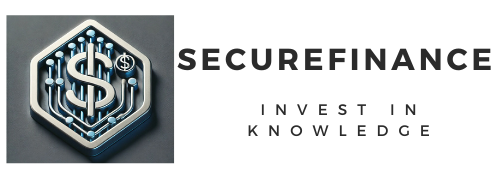
The glimmering reflection of a Lamborghini in the showroom window. The spine-tingling growl of a Ferrari engine at idle. The pulse-raising thrill of knowing you could soon be behind the wheel. Supercars are more than vehicles—they’re dreams sculpted in carbon fiber and aluminum. But before you take that first exhilarating drive, there’s a question to tackle with precision and purpose: Are you financially prepared for a supercar purchase?
Whether your goal is to own an Aston Martin DB11, a McLaren 720S, or a timeless Porsche 911 Turbo, smart financial planning is your on-ramp to success. Let’s explore a comprehensive roadmap on saving for supercars, covering every corner of this exciting pursuit—from budgeting to building wealth.
Understanding the Luxury Auto Market
The supercar realm includes elite vehicles known for their superior engineering, prestige, and performance. Brands like Bugatti, Ferrari, Lamborghini, Koenigsegg, and Pagani headline the market with price tags ranging from $200,000 to several million dollars.
Popular Supercar Price Ranges:
| Brand | Model | Starting MSRP |
|---|---|---|
| Ferrari | F8 Tributo | $283,950 |
| Lamborghini | Huracán EVO | $248,295 |
| McLaren | 720S Spider | $315,000 |
| Porsche | 911 Turbo S Cabriolet | $246,300 |
| Bugatti | Chiron Super Sport | $3,300,000 |
The cost of entry is steep, but so is the value proposition—performance, exclusivity, and sometimes, asset appreciation.
Why People Buy Supercars
Supercars symbolize more than status. They’re passion projects, collector items, and sometimes business tools. Here’s why buyers invest in these rolling works of art:
-
Emotionally fulfilling – a dream realized.
-
Social prestige – a visible sign of success.
-
Appreciating assets – limited editions often rise in value.
-
Networking and community – exclusive clubs and events.
Still, these motivators don’t override the need for solid financial grounding.
The Real Cost of Owning a Supercar
Buying is only the beginning. Maintenance, insurance, and depreciation can chew through your budget like a turbocharger chews air.
True Cost Breakdown:
| Expense Category | Annual Cost Estimate |
|---|---|
| Insurance | $5,000–$20,000 |
| Maintenance & Tires | $3,000–$25,000 |
| Fuel (High Octane) | $2,500–$5,000 |
| Taxes & Registration | $2,000–$10,000 |
| Depreciation (if any) | Varies widely |
Always calculate your total cost of ownership (TCO) to avoid sticker shock after the purchase.
Assessing Your Financial Health First
Before investing in a luxury ride, conduct a comprehensive financial checkup. Ask yourself:
-
What’s my debt-to-income ratio?
-
Is my credit score above 740?
-
Do I have at least six months’ emergency savings?
-
Am I contributing to retirement or other investments?
If the answer to any of these is “no,” it’s time to refine your financial strategy.
Setting a Realistic Supercar Savings Goal
Your dream ride deserves a dream plan. Start by choosing whether you’ll pay cash or finance. If paying cash, set a goal equal to the MSRP plus taxes, licensing, and a buffer for insurance and registration.
Use this formula:
For a $250,000 car, that’s roughly $287,000 total.
How to Budget for a Supercar
Take charge of your spending with zero-based budgeting—assign every dollar a job. Modify the 50/30/20 rule:
-
40% Needs
-
20% Wants
-
30% Savings (including supercar)
-
10% Investments
Don’t just stash—allocate. Label a line in your budget “Supercar Fund” and prioritize it as if it’s a mortgage.
Opening a Separate Supercar Fund
Out of sight, out of mind works wonders. Open a high-yield savings account or money market fund titled “Supercar Fund.” Automate transfers so saving becomes effortless. Bonus: You earn compound interest while watching your balance build.
Investing Smartly Towards Your Goal
Saving $200,000 in a traditional savings account could take a decade. Invest wisely instead. Here’s a sample conservative portfolio:
-
Index funds (60%)
-
Dividend stocks (20%)
-
Crypto (optional – 10%)
-
Bonds (10%)
Avoid “get-rich-quick” schemes and prioritize long-term consistency.
Side Hustles That Can Accelerate Your Car Fund
-
Freelance design, writing, coding
-
Online courses or coaching
-
Airbnb hosting
-
Flipping luxury watches or sneakers
Even $1,000/month from a hustle adds up to $60,000 in five years—enough for a hefty down payment.
Passive Income Ideas for Faster Savings
-
Invest in REITs or dividend-paying ETFs
-
Create a print-on-demand brand
-
Launch an affiliate blog
-
Build a YouTube channel around exotic cars
Let your money or your creativity work while you sleep.
Luxury Car Financing Explained
Don’t let the glitz blind you—exotic car loans differ from standard auto loans. Terms may include:
-
Higher interest rates (6–10%)
-
Large balloon payments
-
Shorter terms (36–60 months)
Shop lenders who specialize in exotic financing like Woodside Credit or Putnam Leasing.
Paying Cash vs. Financing a Supercar
Cash Pros:
✔ No interest
✔ Full ownership
✔ Higher negotiation power
Financing Pros:
✔ Preserves liquidity
✔ May yield investment returns exceeding interest cost
Use this rule of thumb: If you can’t afford to buy it in cash, you can’t afford to finance it.
Down Payment Strategies That Work
Aim for at least 20–30% down, especially on exotic leases. Ideas:
-
Use tax refunds
-
Cash out bonuses
-
Redirect annual raises
Never dip into emergency funds for a down payment.
You Can Also Read : Smart Banking Tools to Reach Your Luxury Car Goal Faster
Boosting Credit to Secure Lower Interest Rates
-
Keep utilization under 30%
-
Pay twice per billing cycle
-
Become an authorized user on strong accounts
-
Remove old collections and errors
A 100-point score boost could save you tens of thousands in loan interest.
